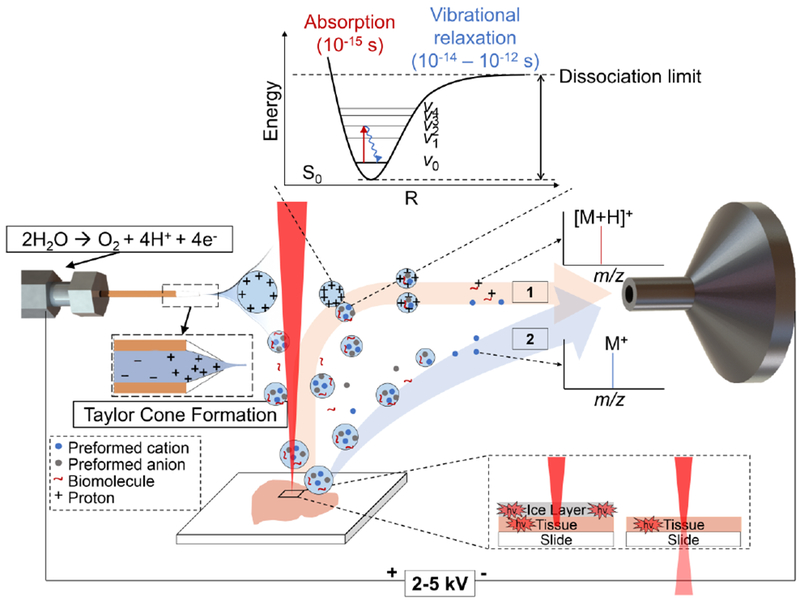Figure 7.

The diagram graphically exhibits the key energy transfer and ionization processes underlying positive mode-IR-MALDESI proposed at the current stage. The process starts with the IR-laser absorption solely by inherent water molecules in biological samples, or combinedly by inherent water and exogenous ice with higher energy intake. Then the surface evaporation and phase explosions result in a primary material expulsion, followed by a recoil-induced secondary material ejection [55, 56]. The ejected biomolecules in droplets or particulates are subsequently captured by an orthogonally oriented electrospray plume and lose their internal energy on the picosecond timescale via vibrational relaxation, producing analyte-containing charged droplets. Gas-phase protonated ions are eventually formed following an ESI-like mechanism (denoted by 1 in the diagram) with internal energy indistinguishable from ions generated by conventional ESI. Pre-charged species in the form of salts proceed through either electrospray post-ionization or direct ionization by disintegrating their counter ions (denoted by 2 in the diagram). These directly-formed ions preserve the internal energy input during laser-induced desorption process and thus may dissociate more drastically and in uncommon ways.
